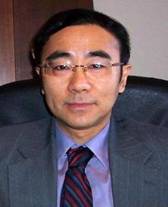Explore application of electron work function in material analysis and design
SEMINAR
Key Laboratory of Inorganic Coating Materials, Chinese Academy of Sciences
中国科学院特种无机涂层重点实验室
Explore application of electron work function in material analysis and design
Speaker:Prof. Dongyang Li (李东阳教授)
Department of Chemical and Materials Engineering, University of Alberta
时间:7月20日 (星期三)9:30 AM
地点:嘉定园区1号楼二楼218会议室
联系人:陶顺衍 研究员 69906321
Abstract: With rapid advance in material technology, material design has been required to rely on more fundamental principles. Intrinsic properties of materials are largely governed by their electron behaviour, which determines the atomic bond strength. Great effort has long been made to correlate properties of materials to their electron state based on quantum mechanics. However, quantum theories are generally complicated to be used in material design, especially for structural materials which consist of various phases and imperfections. Thus, it is highly desired to have simple but fundamental parameters, which largely reflect the electron behaviour of materials, for material analysis and design in a feasible manner. In this talk, electron work function, which is the minimum energy to move electrons at Fermi level inside a solid to its surface without kinetic energy, is demonstrated to be a promising indicative parameter to characterize materials and provide clues for material design and tailoring. Correlations between EWF and mechanical and electrochemical properties of materials, including alloys, composites and carbides, and interfaces will be discussed. 
Bio: Dr. Dongyang (D.Y.) Li is a Professor at Department of Chemical and Materials Engineering, University of Alberta. His interests of research include wear, corrosion, surfaces and interfaces, nano-materials, and computational materials science. Dr. Li obtained a B.Sc. in Solid Mechanics from University of Science and Technology China (1982), a M.Sc. in Solid-State Physics from Zhongshan University (1985), a PhD in Materials Physics from University of Science and Technology Beijing (1990) and a PhD in Metallurgical Engineering from McGill University (1995). Before joining U of Alberta in 1998, he worked as a postdoctoral fellow at the Pennsylvania State University (1995 – 97). He is an Adjunct Professor in Dept. of Biomedical Engineering, U. of Alberta, a visiting professor at the National University of Singapore (2004, 2012) and Massachusetts Institute of Technology (2011), a foreign doctoral advisor at the Harbin Institute of Technology. He is on editorial board for 12 technical journals. Dr. Li has in excess of three hundred technical publications including more than two hundred and sixty journal publications.
Selected publications:
-
Hao Lu, Ziran Liu, Xianguo Yan, Dongyang Li*, Leo Parent, Harry Tian, Electron work function–a promising guiding parameter for material design, Scientific Report, Sci Rep. 2016; 6: 24366. DOI: 10.1038/srep24366.
-
Guomin Hua and Dongyang Li*, Electron Work Function: A Novel Probe for Toughness, PCCP, 18 (2016) 4753-4759.
-
Liqiu Guo, Guomin Hua, Binjie Yang, Hao Lu, Lijie Qiao, Xianguo Yan, and Dongyang Li*, Electron work functions and adhesive behaviors of ferrite and austenite phases in a duplex stainless steel, Scientific Report, 2016, DOI:10.1038/srep20660.
-
Z. R. Liu and D. Y. Li*, An electronic law of solid solution strengthening and ductilizing magnesium alloys, Acta Materialia, 2015, 89 (2015) 225-233.
-
Sareh Mosleh-Shirazi, Guomin Hua, Farshad Akhlaghi, Xianguo Yan, Dongyang Li*, Interfacial valence electron localization and the corrosion resistance of Al-SiC nanocomposite, Scientific Report, 2015, DOI: 10.1038/srep18154.
-
H. Lu, G. Hua, D.Y. Li*, Dependence of the mechanical behavior on the electron work function-an alternative parameter for materials design, Appl. Phys. Lett., 103, 261902 (2013); DOI: 10.1063/1.4852675.
-
Ning Fu, Xinhu Tang, Dongyang Li*. Is it effective to harvest visible light by decreasing the band gap of photocatalytic materials? Appl. Phys. Lett., 100 (2012) 093901. DOI: 10.1063/1.3690052.
-
L. Yue, H. Zhang, D.Y. Li*, A closer look at the local responses of twin and grain boundaries in Cu to stress at the nanoscale with possible transition from the P–H to the inverse P–H relation, Acta Materialia, 58 (2010) 2677–2684
-
Guomin Hua and Dongyang Li*, Generic Relation between the Electron Work Function and Young’s Modulus of Metals, Appl. Phys. Lett., 2011, DOI: 10.1063/1.3614475.
-
W. Li and D.Y. Li*, Influence of surface morphology on corrosion and electron behavior, Acta Materialia., 54 (2006) 445-452.
-
W. Li and D.Y. Li*, Effect of surface geometrical configurations induced by microcracks on the electron work function, Acta Materialia, 53 (2005) 3871-3878.
-
H. Zhang, Q. Chen and D.Y. Li*, Development of a novel lateral force-sensing indentation technique for determination of interfacial bonding strength, Acta Materialia, 52 (2004), 2037-2046.
热烈欢迎科研人员和研究生参加!


 当前位置:
当前位置:

